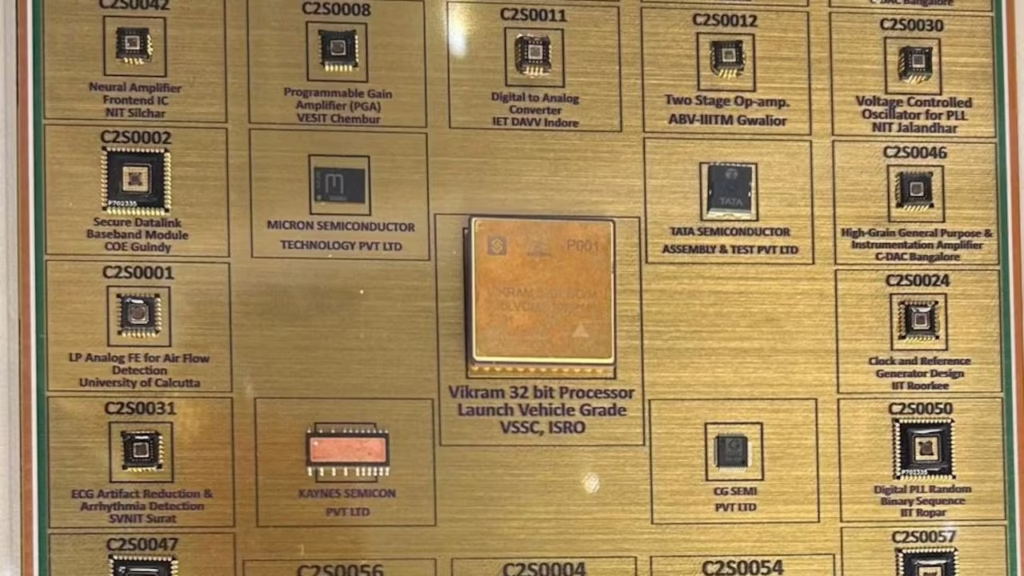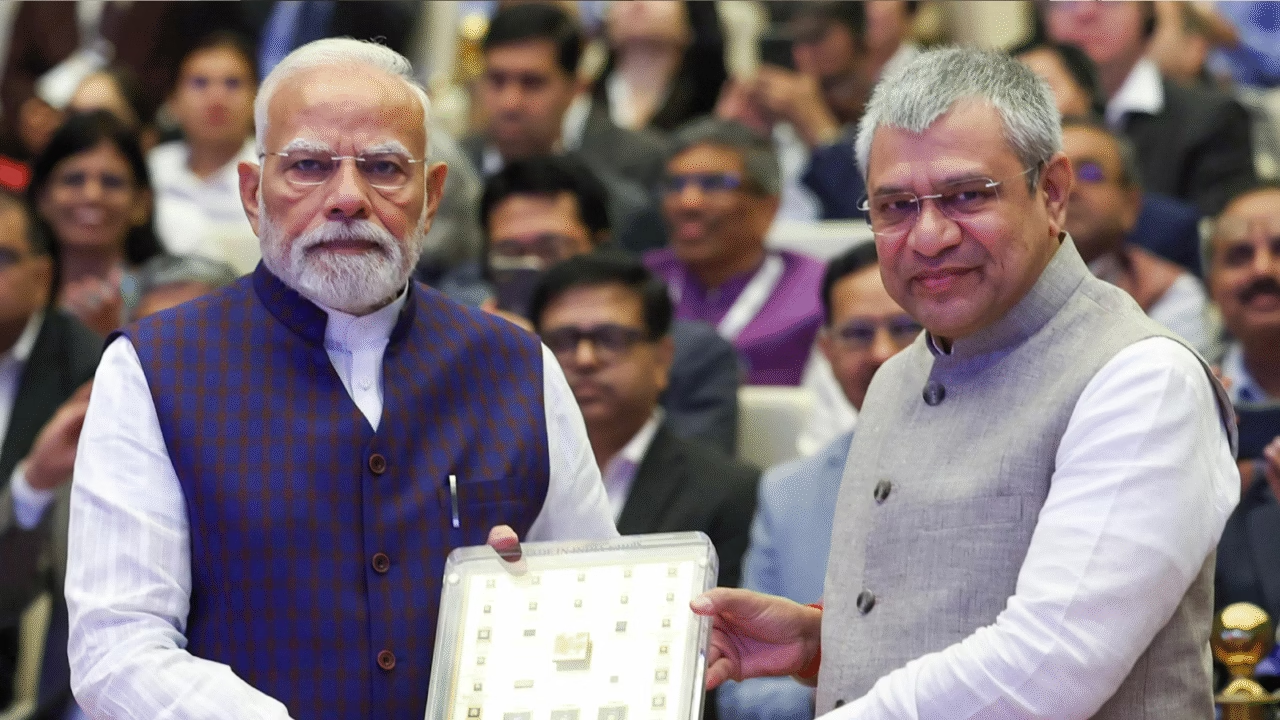India marked a historic milestone in its semiconductor journey with the unveiling of the country’s first fully indigenous Vikram 32-bit processor at Semicon India 2025. The processor, developed under the “Digital India” and “Atmanirbhar Bharat” vision, was presented by Union Minister for Electronics and IT, Ashwini Vaishnaw, to Prime Minister Narendra Modi during the flagship semiconductor event. This achievement signifies India’s growing capabilities in advanced electronics and its ambitions to emerge as a global hub for semiconductor innovation.
A Leap in India’s Semiconductor Mission
The launch of the Vikram 32-bit processor represents more than just a technological breakthrough; it is a strategic move towards self-reliance in critical digital infrastructure. For decades, India has relied heavily on imported semiconductor chips for consumer electronics, defense, automotive, and telecom industries. With the Vikram processor, the country has taken a bold step in reducing this dependence and building home-grown intellectual property (IP) in one of the most crucial sectors of the 21st century.

Minister Vaishnaw highlighted that the Vikram chip is not just a symbolic innovation but a product of cutting-edge R&D, involving Indian engineers, scientists, and academic institutions. The processor has been designed to meet global standards in performance, efficiency, and reliability, making it suitable for a wide range of applications from smartphones and IoT devices to defense systems and industrial automation.
PM Modi’s Vision for an Electronics Hub
Receiving the processor, Prime Minister Modi emphasized how this breakthrough aligns with India’s long-term vision of becoming a semiconductor manufacturing powerhouse. He stated that the Vikram processor reflects India’s talent pool, innovation capacity, and policy push under initiatives like the Semicon India Program, which has been instrumental in attracting investments, building fabs, and nurturing design ecosystems.
PM Modi also underlined that semiconductors are the backbone of the modern economy, powering everything from satellites and automobiles to healthcare devices and AI-driven solutions. By developing an indigenous processor, India is not only securing its technological sovereignty but also paving the way for export competitiveness in global chip markets.
PM Modi emphasized that semiconductors form the foundation of the contemporary economy, fueling everything from satellites and cars to healthcare technologies and AI solutions. By creating an indigenous processor, India is not only safeguarding its technological independence but also setting the stage for competitive exports in the global chip industry.
Technical and Strategic Significance
The Vikram 32-bit processor has been crafted with scalability in mind, allowing it to advance into more sophisticated versions like 64-bit and even specialized processors for AI and machine learning in the future. Its energy efficiency and versatility make it perfectly suited for India’s expanding electronics market, projected to exceed $300 billion by 2026.
From a strategic perspective, the processor bolsters India’s defense and security framework. Homegrown chips mitigate risks associated with global supply chain disruptions, cyber threats, or geopolitical conflicts. As nations worldwide strive to secure semiconductor capabilities, India’s foray into processor design signifies a pivotal change in the global technology landscape.
Boost for “Atmanirbhar Bharat”
The introduction of the Vikram processor aligns with India’s larger initiative for Atmanirbhar Bharat (self-reliant India). It exemplifies how government policies, industry partnerships, and research institutions can collaboratively foster innovation. Additionally, it instills confidence in start-ups and international investors that India is committed to becoming a leader in semiconductor design and manufacturing.
Although the Vikram 32-bit processor marks an impressive start, the true challenge lies in mass production, scaling fabrication facilities, and maintaining cost competitiveness. India has already formed partnerships with global companies for semiconductor fabs in Gujarat and other regions, which will be vital in transitioning this processor from prototype to widespread market acceptance.
The launch at Semicon India 2025 represents a significant milestone in India’s digital growth narrative. With Vikram at the forefront

